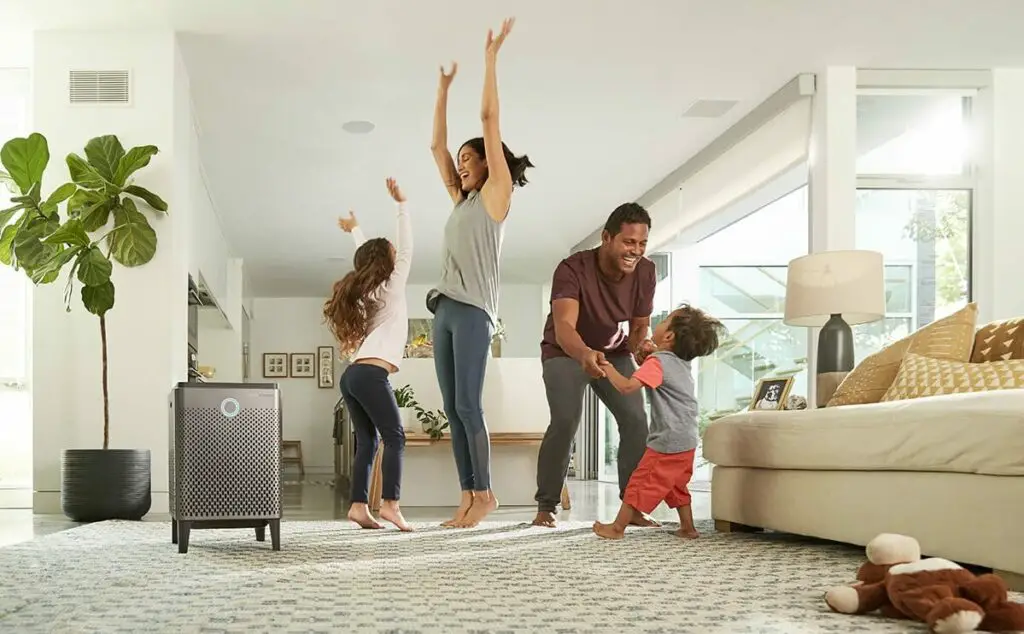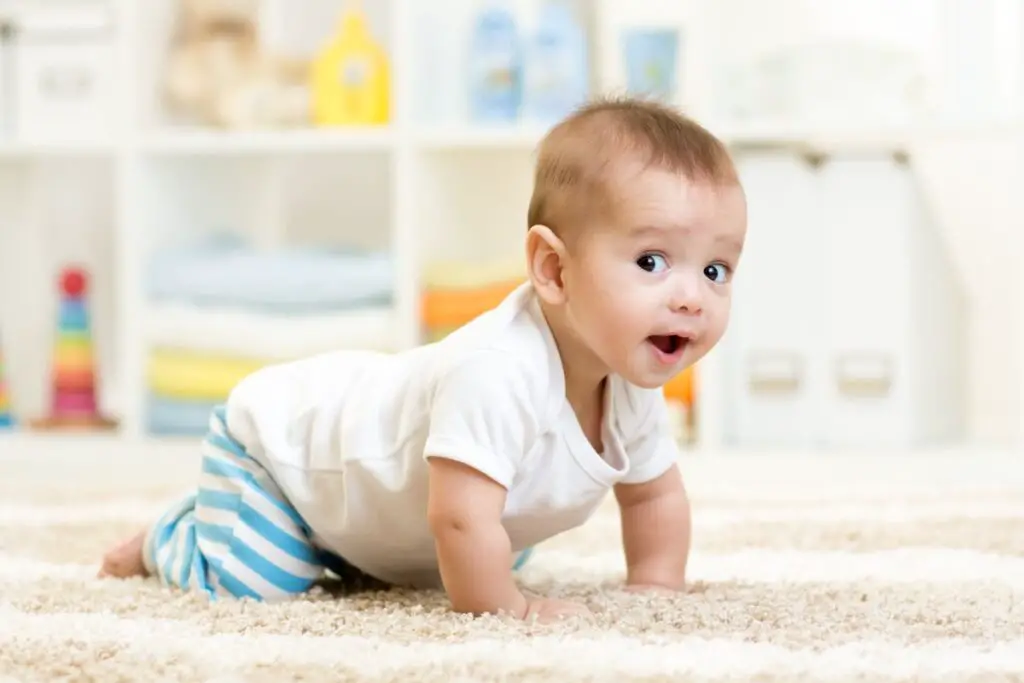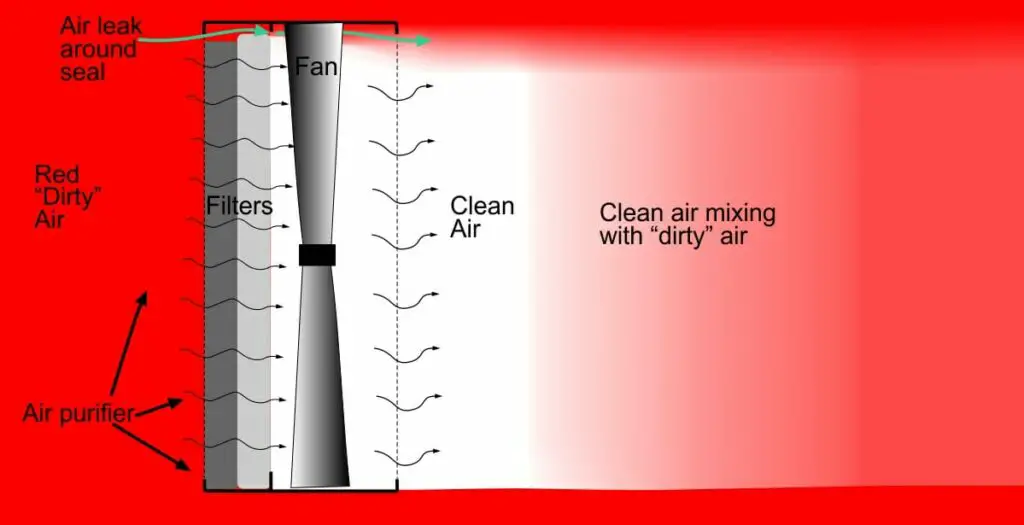Children are wonderful but vulnerable to all sorts of possible dangers from which we parents need to protect them. Over the last few years research has shown that they are particularly vulnerable to air pollution. So it is natural for a parent to wonder, should I buy an air purifier for my kids? It is now apparent that the Environment Protection Agency’s level at which particles become a problem may be set too high as studies have shown that there are adverse effects on health can be seen at levels below the EPAs threshold. In fact, according to US government statistics, 98% of areas in the US for which there are data have airborne particle levels greater than the World Health Organisation safe level.
Personally, I think there is enough evidence of harm to the health of children from particles in the air that ideally every child should breathe purified air for at least eight hours a day.
So which air purifiers would we use to achieve this?
As a general rule the best air purifier for kids is either the Coway 300S or Coway 400S depending on room size. The iQair is a truly excellent choice and may have slightly better air quality than the Coway, but it is noisier.
So lets consider why children could benefit from having clean air for at least a few hours a day.
The Affect of Airborne Particles on Children
Evidence that air pollution reaches all parts of a child’s body was seen in a study in which carbon particles from air pollution were found in the urine of children. So this is evidence that when we breathe in particles, if they’re small enough, they can get into the deepest parts of our lungs and enter our bloodstream. The particles end up in the urine as the kidneys are constantly filtering them out. In this way, the level of particles in the blood does not keep increasing as new particles enter the bloodstream from the lungs.

Brain
Fine particulate air pollution is related to delayed psychomotor development and lower child intelligence. Particulate exposure at relatively low levels has been shown to alter brain structure in children. This was shown using MRI scans from 11,000 children aged 9 and 10 from cities in the United States. Areas of the brain associated with emotion were larger whereas other areas associated with thinking skills were smaller.
Air pollution as a child seems to affect the rate of decline in cognitive function with age. In one study, those with higher pollution levels in childhood had a faster rate of cognitive decline through to the age of 70 years old.
Also, it has been found that children who breathe air with less pollution do better in exams.
Lungs
A study from California recruited 1759 children at an average age of 10 years and followed them until they are 18 years old. It was found that deficits in the growth of airflow from the lungs in one second (FEV1) was linked to PM 2.5, nitrogen dioxide, elemental carbon and acid vapor. So this study associated air pollution with poorer lung development.
Children who live in high ozone areas and play sports outside have an increased incidence of asthma. Also children you are exposed to particulate pollution are more likely to develop wheezing and asthma.
Children who live near busy roads have more asthma. If they develop as much higher the levels of pollutants means that they are more likely to develop bronchitis-inflammation of the airways.
Particulate pollution is related to an increased incidence of chest infections in children who are then more likely to miss school. Also short term increases in PM2.5, PM10 and nitrogen dioxide levels all lead to more respiratory problems needing primary care consultations.
Conversely, cleaner air was associated with fewer respiratory symptoms in children.
Obesity
There seems to be a link between air pollution and childhood obesity.
Mental Health
Psychiatric health is also impaired in children exposed to air pollution-they tend to be more anxious. Metabolic changes were found in the brains of 12-year-olds exposed to air pollution caused by traffic and this correlated with anxiety. There is also an increase in urgent psychiatric presentation by children to hospital with an increase in air pollution. Teenagers living in polluted areas have a 40% increased incidence of psychosis. Children from areas with raised pollution levels were 3 to 4 times more likely to have depression at the age of 18.
Childhood air pollution is linked to poorer mental health at age 18.
Increased Aging in Children in Response to Increased Indoor Air Pollution
A study from Europe, by measuring the amount of chemical change of our DNA, investigated the effect of air pollution on genetic age in children. By measuring the number and pattern of methyl groups added to the DNA, our genetic age can be calculated. This is part of a field of science known as epigenetics. There are various forms of these clocks but one, Horvath’s Grim Age Clock can predict when we will die fairly accurately. In children who are exposed to increased particulate matter indoors or tobacco smoke, their epigenetic age was found to be increased.
So there are effects of indoor air pollution on the genetics of aging in children.
Deaths in Children
6.6% of deaths of children aged 1 to 5 years old in the United States and 13.6% in Europe are attributable to fine particulate pollution.
So Having Established the Need For Something to Lower Our Children’s Exposure to Particles Are Air Purifiers Effective?
In general air purifiers are very effective at reducing airborne particle count, as shown in this graph from and experiment that I carried out–

So air purifiers can be really effective at improving indoor air quality.
However, please be careful when buying an air purifier, as some expensive machines give sub-optimal results. The Wirecutter or reviewed the MoleKule air purifier as outlined in this YouTube video –
Which Types of Air Purifiers Are Best For Children?
1) HEPA filtration
To provide excellent filtration of airborne particles, you should buy a HEPA air purifier, with a true HEPA filter, avoid those with “HEPA like” or “HEPA style”…. filters. HEPA filtration easily removes airborne particles with a very high efficiency. This efficiency is measured at 0.3um and to be certified as HEPA specification, the filter must remove 99.97% of the particles. However, this specification does not cover particles less than 0.1um, “ultrafine particles”.
Studies have also shown ultrafine particles can penetrate into the deepest areas of our lungs and then can enter our blood stream. So that when you breathe in ultrafine particles within 12-30 minutes, they appear in your bloodstream. These particles are found in normal indoor air, about 2 million particles per cubic liter, but at much higher concentrations during cooking. They have also been found in human brains and are thought to have serious health effects particularly provoking heart attacks. A few filters are also specified to deal with ultrafine particles. For additional information about ultrafine particles please see this article-“Airborne Ultrafine Particles-do they accelerate aging?”
A HEPA air filter will filter out (in order of descending size)-
- House dust mite
- Pet dander
- Pollen
- Mold Spores
- Airborne allergen
- Dust-household and atmospheric
- Bacteria
- Viruses
- Brake dust
- Tire dust
- Vehicle exhaust particles
- Smoke particles from both cigarette smoke and wildfire smoke
2) Activated Carbon filter
The air purifier should also have a carbon filter, as a HEPA filter cannot catch gaseous pollutants. This is because the molecules are too small to be trapped by the filter. The activated carbon removes airborne chemicals, these include volatile organic compounds, which cause odors. So this filter is sometimes referred to as the “odor filter” and can be especially helpful for reducing household odors such as pet odor.
For additional information, please see this article on how air purifiers work.
Of course, filter replacement will be necessary and the expense of this can be very different from one air purifier to another. Once the old filter is thrown out, the particles or chemicals stuck to it are removed from the home forever.
UV light is not essential in an air purifier and indeed, most of the top air purifiers do not have it. Its effectiveness is limited because the air passes by the UV light so quickly that there is little time for any micro-organism in the air to be irradiated and destroyed. So a HEPA filter is more effective at removing bacteria, mold spores and viruses. An air purifier should not produce ozone and one way of ensuring this is to buy a straight forward fan/carbon-filter/HEPA-filter air purifier.
Other air purifiers without HEPA filters are not recommended, as they have not been found to be as effective as HEPA filters.

3) As Quiet as Possible in Operation so That the Childrens Developing Hearing is Not Damaged
The children’s cochlea, which senses sound, will be developing and so will the wiring connections with the brain for hearing will be maturing. It seems prudent to have as little interference with the development of hearing as possible, hence the wish to have as quiet an air purifier as possible.
Children vary from babies, right the way up to young adults. Babies I have treated as a separate category and written about them in this article “Best Air Purifier for a Baby“.
The quietest air purifiers for the air flow that remove ultrafine particles are the Coway 400S and the Coway 300S-
Best Air Purifier for Kids-Coway 400S
The Coway 400S has an very highly specified HEPA filter which deals with ultrafine particles. It is quiet and yet has such a good air flow that it will even purify the air in a room of 300 sq ft at a noise level of 28db. This would feel about half as loud as my recommended maximum sound level from an air purifier to enable sleep in a bedroom So this is certainly a quiet purifier!
Specifications

Specifications
| Filters | |
| HEPA filter | HEPA specified to remove 99.8% of ultrafine particles down to a size of 0.01um |
| Carbon filter amount of carbon (lb) | 1.5 lb so more than most other air purifiers |
| Filter Change HEPA (Particles) | 12 months |
| Filter Change Carbon (Chemicals) | 12 months |
| Airflow | |
| CADR at =<50db (CADR on Maximum) | 293 cfm |
| Maximum Room Size (Noise less than 50db*) | 450 sq ft |
| Maximum Room Size (On noisiest setting) | 640 sq ft |
| Smart Control | Yes phone app/Alexa:/Google Home |
| Power | 66 W |
| Weight | 24.7 lbs |
| Dimensions “H x “W x D” | 22.8 x 14.8 x 14.8 |
| Annual Running Cost Electricity ($) | $40 |
| Annual Running Cost Filters ($) | $120 |
| Total Annual Running Cost ($) | $160 |
All the above are approximate and assume running the air purifier for 12 hours per day on the highest setting that keeps the noise below the level specified in db in the table. This is less than or equal to 50db in normal daytime use and 35db for bedrooms.
*Most people will not wish to have the air purifier on a setting louder than about 35db for sleeping in a bedroom-you may wish to have a quieter setting than 35db this is just a ballpark estimate for most people. On the other hand, if your room layout allows you to be much further than 6 feet from the air purifier you may find the noise this machine makes at top speed is alright. The calculations for room size assume that you have 8 foot ceilings and 5 air changes per hour.
Never run an air purifier on auto mode using the inbuilt sensor. These cannot detect ultrafine particles which are damaging to human health, please see this article- How to test the air quality in your home.
Its appearance is generally pleasing. It comes in black and white. The holes in the body casing add some black to the white and soften it. The top is black and so consequently you will be looking down on a black square in your room.
I think that ideally there should also be a midrange color option, ideally a light grey like the iQair HealthPro Plus or a matt metallic slightly reflective coating which can reflect other colours in the room. In this way, the air purifier would blend in with your decor, not stick out. Both white and black add contrast and are obvious in a room of intermediate colors.
Coway 300S
The smaller partner to the Coway 400S this is another excellent air purifier for kids. It has the second highest airflow per decibel on the market in the reasonable noise range. There is one air purifier that has a higher airflow per decibel but only when it is on its highest setting and then it makes so much noise that it would be impossible to be in the room with it for long.

Specifications
| Filters | |
| HEPA filter | HEPA specified to remove 99.8% of ultrafine particles down to a size of 0.01um |
| Carbon filter amount of carbon (lb) | 1.5 lb so more than most other air purifiers |
| Filter Change HEPA (Particles) | 12 months |
| Filter Change Carbon (Chemicals) | 12 months |
| Airflow | |
| CADR at =<50db (CADR on Maximum) | 354 cfm (354 cfm) |
| Maximum Room Size (Noise less than 50db*) | 545 sq ft |
| Maximum Room Size (On noisiest setting) | 545 sq ft |
| Smart Control | Yes phone app |
| Power | 57 W |
| Weight | 21.4 lbs |
| Dimensions “H x “W x D” | 21.2 x 13.6 x 13.6 |
| Annual Running Cost Electricity ($) | $40 |
| Annual Running Cost Filters ($) | $120 |
| Total Annual Running Cost ($) | $160 |
Why Both Coways?-an example of a new system
The different noise levels of these two Coway air purifiers at various fan speeds makes each one more suitable for specific situations.
The Coway 300S is the ultimate air purifier for quiet rooms, as it will purify the air in a room up to 370 sq ft at a noise level of 32 db. In contrast the Coway 400S would be twice as noisy for a room of this size at 43db. The majority of other air purifiers on the market would be twice as noisy again. So, in a room of this size, the Coway 300S makes about a quarter of the noise of an average air purifier.

The diagram does not go below 28db as this sound level is largely inaudible in a room, and should be quiet enough for anyone.
The new system that I have developed of picking individual speeds for particular room sizes leads to the quietest choice of air purifier for a particular room. It works well for these 2 Coway models. One of these two air purifiers will take into account room size to give you the quietest possible air purification for your room.
iQair HealthPro Plus (second best chemical filter specification and supreme particle filter)
This air purifier is more affordable than the iQair Multigas and still has a better carbon filter than the Coway 400s. However, it is only suitable for rooms up to 262 sq ft, if the room has standard 8ft ceilings unless you are very tolerant of noise and even then in view of your child’s developing hearing I would not recommend switching up the setting beyond setting 4.
No pre-filter cleaning is needed, this is quite an advantage as most air purifiers have pre-filters which the manufacturer states should be cleaned every 2-4 weeks!

| Filters | |
| HEPA filter | HEPA specified to remove 99.8% of ultrafine particles down to a size of 0.003um |
| Carbon filter amount of carbon (lb) | 5 lb so 40x more than some other air purifiers |
| Filter Change HEPA (Particles) | 15 months for pre filter 48 months for Hyper-HEPA filter |
| Filter Change Carbon (Chemicals) | 20 months |
| Airflow | |
| CADR at =<50db (CADR on Maximum) | 170 cfm |
| Maximum Room Size (Noise less than 50db*) | 262 sq ft |
| Maximum Room Size (On noisiest setting) | 462 sq ft |
| Smart Control | Yes smart plug |
| Power | 74 W |
| Weight | 35 lbs |
| Dimensions “H x “W x D” | 28x 15 x 16 |
| Annual Running Cost Electricity ($) | $45 |
| Annual Running Cost Filters ($) | $180 |
| Total Annual Running Cost ($) | $230 |
It is a great air purifier for kids and produces arguably the cleanest air of any air purifier. The only drawback being the louder noise per unit of airflow compared to some other airflows.
There is an in depth review of this air purifier here.
How to Use an Air Purifier if You Buy One
In one review of studies where air purifiers were used, fine particulate matter was reduced between 23-92%. Bear in mind the EPA recommends a minimum reduction of 80%. So even in experimental studies with training in how to use the air purifiers, most air purifier users failed to hit this target. On the other hand, it shows that air purifiers, when used well, can decrease particle count by 90%. This just emphasizes the importance of how you use the air purifier.
- Buying an air purifier-the air purifier should have a true HEPA filter, adequate air flow (CADR) at a noise that you can tolerate for long periods. The air purifier should be “smart” that is programmable or capable of being made smart. The most difficult part is buying one with an adequate air flow at a noise that you can tolerate for long periods as most air purifiers are too loud on their maximum fan speed and manufacturers usually do not give data on air flow and noise at lower fan speeds. There is helpful advice about buying an air purifier here-“Buying an air purifier”. Alternatively, just buy the recommendations on this site. If you want the quietest air purifier you may wish to read this article-“Best Quiet Air Purifiers“, if you need one that will remove particles very well but is particularly good at removing chemicals from the air, for example from forest fires, please see this article-“Best Air Purifier for Smoke“.
- Position the air purifier at least 12 inches from any wall-so that the air coming out of the air purifier joins in with the circulation of air in the room. There is advice about using an air purifier in this article-“How to Use an Air Purifier“.
- Run the air purifier for at least 30 minutes before entering the room. This is because it takes an air purifier this long to reduce the particle count in the room. So the air purifier that you buy needs to be smart or capable of being made smart by plugging it into a smart plug.
- Run the air purifier continuously when you are in the room at the highest setting that you can tolerate long term. This is because the higher the setting that you run the air purifier on the lower the particle count in the air will be. There is no lower threshold known below which human health does not improve, so the lower the particle count/PM2.5 the better. Health aspects of particle count/PM2.5 are outlined in this article-“Airborne Particles and Chemicals Affect Us All Now“.
- Never run the air purifier using its inbuilt sensor-there are 7 reasons that you should not do this as outlined in this article-“How to Use an Air Purifier“.
- Always test the air with an air quality meter where you are going to sit at the height in the room where your mouth and nose are. Comparing the measurements before and 45 minutes after switching the air purifier on there should be at least an 80% reduction in particle count as the EPA recommends. Testing that the particle count/PM2.5 is adequately reduced by your air purifier is the most important thing that you need to do. Air quality meters can be brought really quite cheaply eg $35, there is a helpful article about them here-“How to Test Air Quality in Your Home“.
- How many air purifiers do I need?-at least 2 but maybe 5 or more. Please see this article “How many air purifiers“.
Other Ways of Reducing Air Pollution in Your Home
There are of course many other ways of reducing air pollution in your home. I have listed 29 other ways of doing this in addition to buying an air purifier in this article, “How Can I Reduce Air Pollution in My Home?“. Of course the most effective way is to use an air purifier, but these additional steps also can help tremendously.
Conclusion
If anyone can benefit from high indoor air quality, free of air pollutants, it is children. They are developing at a rapid rate and small defects in their bodies can potentially be magnified as they develop.
Any of the air cleaners above are very effective at removing airborne pollutants such as fine or ultrafine particles from the air. As 98% of the United States for which there is data has levels of PM 2.5, fine airborne particles, above the current WHO safe limits.
This is such a high percentage and we now know that really very low levels particles in the air affect human health that we should probably stop thinking about “pollution”. The problem with thinking pollution is that it conjures up living next to a road or seeing smoke or smog in the atmosphere, and if we do not we do not think of using an air purifier.
If you are sitting in an average room you are currently breathing in approximately 2 million particles per cubic liter or 12 million ultrafine particles per minute. So a better way to look at things is probably due to measure the particle count in our homes with an air quality meter, and at a minimum use an air purifier to reduce the particle count below the WHO safe limit.
A more extreme view would be just to install air purifiers and purify the air in the rooms of the home whenever someone is in the room. Even so you would need to check with an air quality monitor that you had reached to WHO safe level.
Either way you should always use an air quality monitor.
Related Questions
See Also

Air Purifier Technology-A collection of articles about various aspects of air purifier technology.

VOCs and Health-present in all our homes cancer is the main problem

The CADR Rating of an Air Purifier?-the most important statistic


